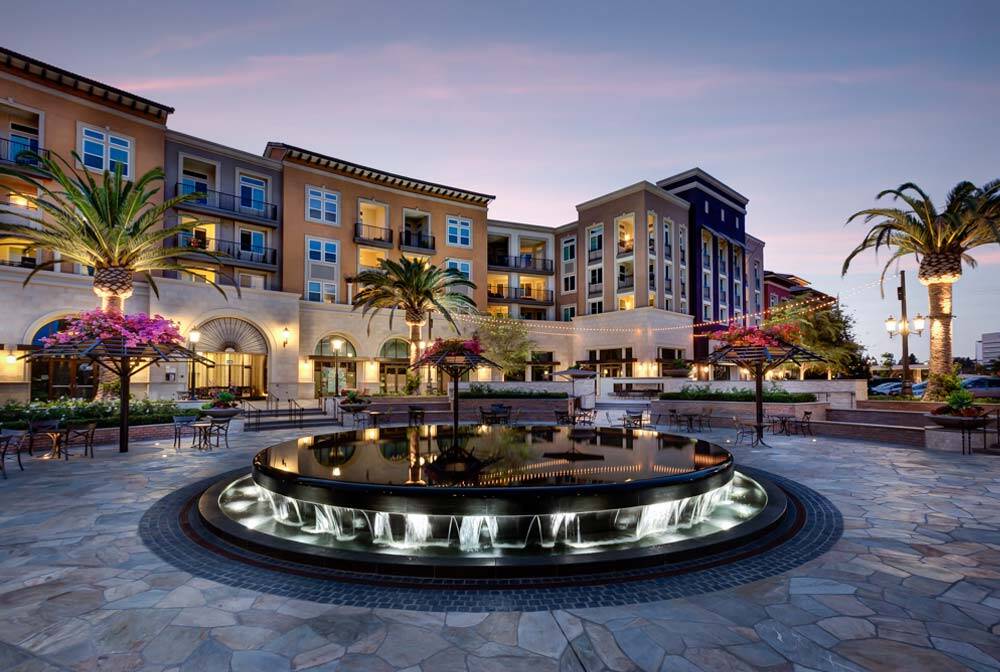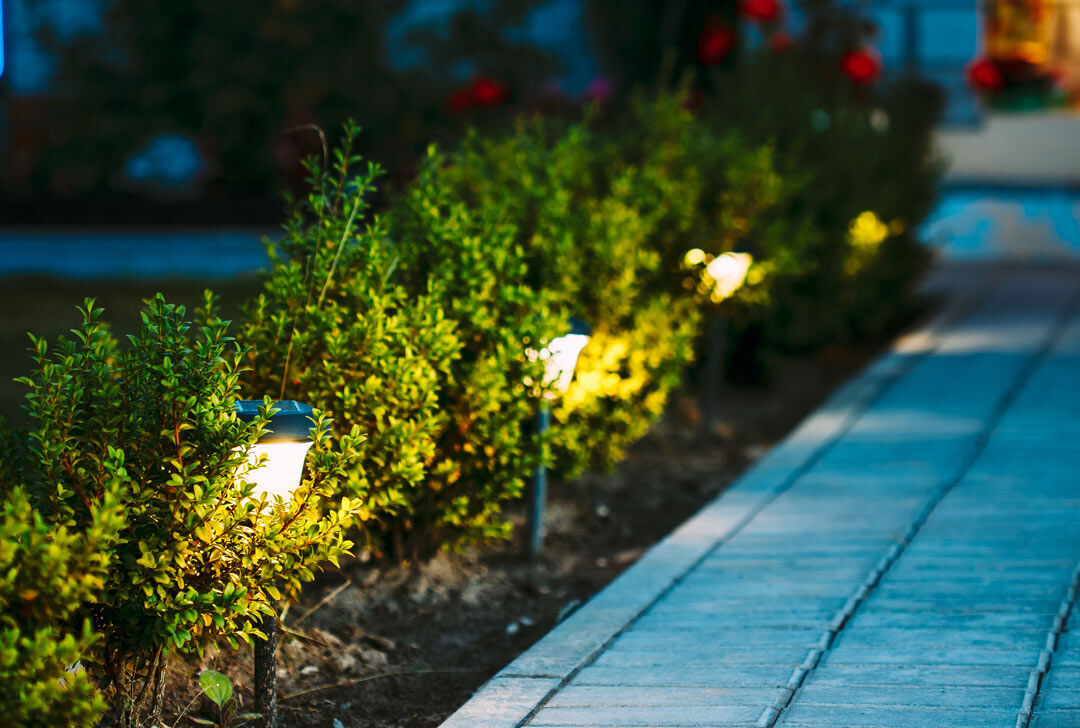Whether for residential or commercial outdoor lighting, LED lighting is becoming increasingly popular. This is not surprising, as it offers an efficient and long-lasting alternative to traditional halogen or incandescent bulbs. But given the high price, is it worth all the rage? What exactly are the benefits of LED landscape lighting, and is it worth upgrading your existing landscape lighting system?
Read on to find out what LEDs are, how they work and learn about the benefits of LED landscape lighting.
What Does LED Stand For?
LED stands for “Light-Emitting Diode.” Simply put, a LED is a semiconductor device that emits light when current passes through it. LEDs are referred to as solid-state devices because the light is generated inside the solid semiconductor material. This is an entirely different technology from heated filaments used by traditional incandescent and halogen lamps, or gas discharge, as in the case of fluorescent lights.
How Do They Work?
When current flows through the diode, electrons combine with electron holes and release energy in the form of photons, which we perceive as light. Therefore, light is emitted directly by electrons, not heat. The color of the light comes from the energy gap in the semiconductor.
For this reason, LEDs can produce a broad spectrum of colors with minimal energy consumption.
Benefits of LED Landscape Lighting
At first glance, the benefits of LED landscape lighting are not so obvious, especially when you consider the price: LEDs can cost up to 6 times as much as compact fluorescent lamps (CFLs). Therefore, consumers buying LEDs for residential outdoor lighting might get discouraged by the upfront cost. The good news is that their manufacturing is gradually improving and increasing, resulting in more affordable prices. With all that considered, LED lighting has nothing but advantages:
1. Efficiency
One of the greatest benefits of LED landscape lighting is energy efficiency. LEDs are the most energy-efficient bulbs on the market; they emit directional light and do not require or emit large amounts of heat. Therefore, they are superior to incandescent and halogen lamps in terms of efficiency. Energy Star-rated LEDs consume around 75 percent less energy than conventional incandescent bulbs and last 25 times longer.
2. Durability
The durability of LED chips comes down to the fact that they have no filaments and are insulated with plastic. They are shock and vibration resistant and perform well, even under strong temperature fluctuations, which is especially useful for outdoor lighting. LED lighting fixtures are usually available in high-quality finishes such as brass, bronze, and copper, adding to their durability.
3. Environment
While energy efficiency and durability alone make them a sustainable choice for landscape lighting systems, LEDs do not contain toxic elements such as mercury. They also have no specific recycling requirements, offering a greener alternative to conventional bulbs.
4. Costs
Although the price may seem high, LEDs being so energy-efficient also means that the initial investment pays off quickly. Switching to LED landscape lighting can reduce your monthly electricity bill by up to 80 percent!
5. Safety
LEDs don’t emit large amounts of heat (95 percent of their energy is converted into light, and only five percent is emitted as heat), giving them a cool feel to touch and minimizing the risk of burns or fire hazards.
6. Control
Unlike some other alternatives, LEDs emit directional light, reducing light pollution and giving you more control over what you can illuminate. You’ll have even more control if you opt for lights with dimmers or LED lighting with replaceable optics (which allows you to adjust the beam angle).
7. Maintenance
With up to 10 times the lifespan of conventional bulbs, LEDs are the lowest maintenance choice on the market. In other words, LED landscape lighting can last up to 20 years (running an average of eight hours a night) with little or no maintenance!
8. Retrofitting
Many homeowners assume that switching to LEDs means replacing their entire outdoor lighting system, which can be a costly investment. However, this is not the case, as existing systems can be easily retrofitted with LEDs. Replacements are available for almost all light fittings but make sure you choose the right voltage.
9. Light Quality
The high-quality light produced by LEDs is particularly valued in landscape lighting (such as in architectural lighting) as their color temperature, and color rendering is considered more natural than that of conventional bulbs. Color rendering is an objective factor (values above 90 are considered ideal). Color temperature, on the other hand, is a matter of personal preference, but LEDs are available in a wide range, making it easier to find the right one for any need.
10. Fewer Pests
It might be the last thing you think about when planning your outdoor lighting, but LEDs can even keep summer insects at bay–so you can enjoy your patio for hours after the sun goes down. That’s because LEDs don’t emit the type of UV light that usually attracts insects.
Summing Up
The benefits of LED landscape lighting outweigh those of halogen or incandescent lamps. Landscape lighting systems with LEDs are more energy-efficient, durable, and safe and offer better value for money than conventional lights.
Ready to make the switch? To learn more about the benefits of LED landscape lighting, call 818-341-8091 or fill out our online form to request a free consultation with Hevi Lite. Our lighting experts look forward to advising you on landscape lighting systems to help make the switch to LED your best investment for the future.


